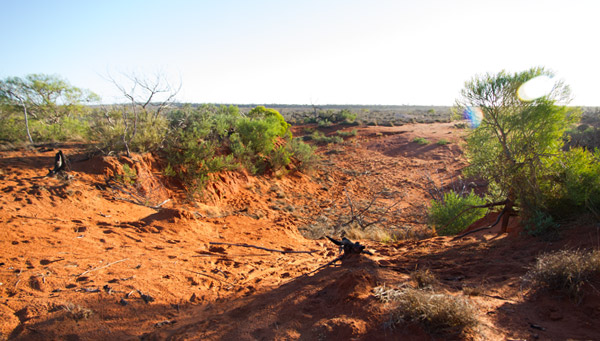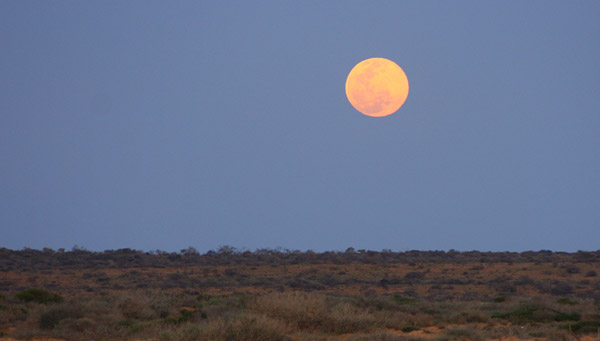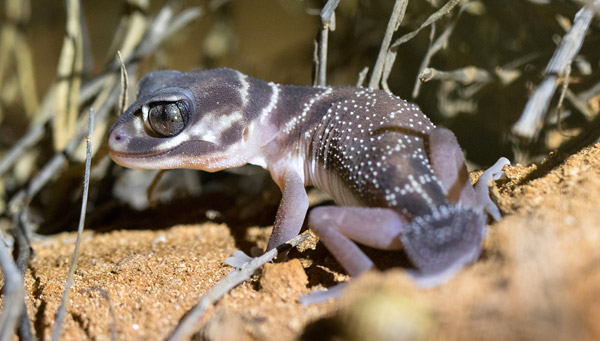
National Biodiversity Hotspot
Gnaraloo is home to a diverse and natural ecosystem. In addition to the rich marine biodiversity that can be found off-shore within the Ningaloo Reef and surrounding waters, Gnaraloo also supports a wide range of terrestrial flora and fauna. Gnaraloo encompasses several different landscapes, from sandy desert to mangrove wetlands, all of which add to the terrestrial biodiversity found in the area.
The ‘Draft 100-Year Biodiversity Conservation Strategy for Western Australia – Phase 1: Blueprint to the Bicentenary in 2029’ classifies the Ningaloo Coast and surrounding terrestrial area of about 400km inland as National Biodiversity Hotspot (Terrestrial) (International and National Biodiversity Hotspot Map, State Government, Western Australia, 2006).


High environmental sensitivity
The Gnaraloo landscape and marine coast are classified as having high environmental sensitivity (Environmental Sensitivity Map, Western Australian Planning Commission). The surface terrestrial area has specialized endemic flora species known only to occur in the area. It also provides a coastal habitat for threatened and vulnerable sea turtles such as loggerhead turtles (Caretta caretta), green turtles (Chelonia mydas), and possibly hawksbill turtles (Eretmochelys imbricata), as well as rarely seen, restricted range reptile species, such as the Gnaraloo mulch slider (Lerista haroldi) which has only been recorded a few times within a small area between Cape Cuvier and the Gnaraloo Homestead area.


Diverse flora and fauna
Gnaraloo is a part of the Carnarvon bio-region, which is considered a transition zone, with a mix of temperate and sub-tropical flora species. The bio-region comprises a diverse range of flora, including up to 630 taxa of recorded vascular plants (Keighery & Gibson). In addition, there have been 30 mammal, 84 reptile, 5 amphibian, and approximately 200 bird species recorded (Kendrick, 1993).
Of these flora and fauna species, several are endemic or near endemic which emphasizes the need to continue conservation efforts throughout this particular region of Western Australia.


Flora
Within the Gnaraloo Wilderness Area, there is a large expanse of spinifex grassland mixed with mulga communities. Open woodlands of Acacia species, such as snakewood (Acacia xiphophylla), can be found across the landscape, along with hummock grasses and shrubs that tend to grow along low sand ridges and dominate the area (Burbidge, McKenzie, & Harvey, 2000). Due to the marginal amount of annual rainfall in the Carnarvon area, as low as 200mm in some places, many species of flora and fauna have evolved and developed adaptations, such as deep root systems, that allow them to thrive in the arid and semi-arid environment (Burbidge et al. 2000).


Fauna
Gnaraloo features an exciting and wide range of local wildlife. You can expect to see a multitude of common wallaroos (Macropus robustus), locally referred to as Euros, as well as a variety of additional fauna, such as pink and grey galahs (Cacatua roseicapilla), perentie monitor lizards (Varanus giganteus), and nankeen kestrels (Falco cenchroides). Some of the classic Australian fauna, such as the emu (Dromaius novaehollandiae) and short-beaked echidna (Tachyglossus aculeatus) also make their home in Gnaraloo. The spinifex hopping-mouse (Notomys alexis) has also been sighted at Gnaraloo. This particular species is an indicator of biodiversity health and has been recorded at Gnaraloo several times by Animal Pest Management Species (APMS) within the last decade. To the east, Gnaraloo borders Lake MacLeod, which is home to a large range of migratory bird species, some of which are protected under the Environment Protection and Biodiversity Conservation Act 1999 (Commonwealth, 2003).
In addition to the fauna found aboveground at Gnaraloo, there is a rich biodiversity of stygofauna and troglofauna that dwell in the karst systems underground.


References
Burbidge, A. H. McKenzie, N. L. & Harvey, M. S. (2000). A biogeographic survey of the southern Carnarvon Basin, Western Australia: background and methods. Records of the Western Australian Museum. 61, 1-12.
Department of the Environment, Water, Heritage and the Arts. (2008). Australian Heritage Database, Places for Decision, Class: Natural, Ningaloo Coast National Heritage Place.
Keighery, G. & Gibson, N. Biogeography and composition of the flora of the Cape Range peninsula, Western Australia. Department of Conservation and Land Management, Wildlife Research Centre, P.O. Box 51, Wanneroo, Western Australia 6065.
Kendrick, P. G. (1993). Biogeography of the Cape Range peninsula, Western Australia. In W F Humphreys, ed., The biogeography of the Cape Range. Records of the Western Australian Museum. 45, 193-206.
The information was compiled by Karen Hattingh, Simone Bosshard, Tessa Concannon, Tess DeSerisy, Heather Shipp and Megan Soulsby, 2017/18
Continue reading
Sea turtle conservation
The scientific Gnaraloo Turtle Conservation Program identifies, monitors and protects key coastal nesting rookeries of endangered sea turtles on the Gnaraloo remote beaches.
Feral animal control
The Gnaraloo Feral Animal Control Program protects the coastal nesting rookeries of endangered sea turtles at Gnaraloo through minimizing feral animal predation of turtle eggs and hatchlings.
